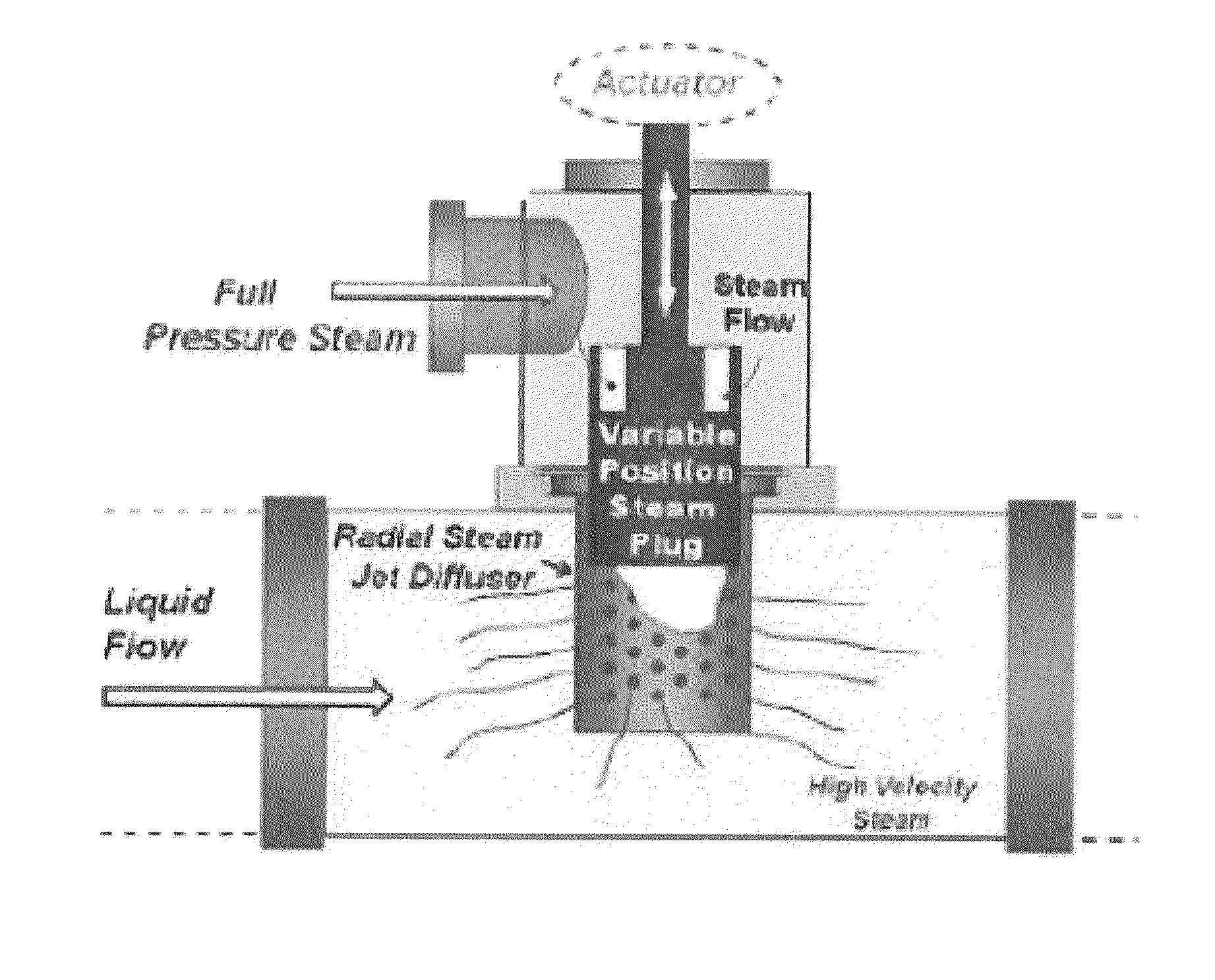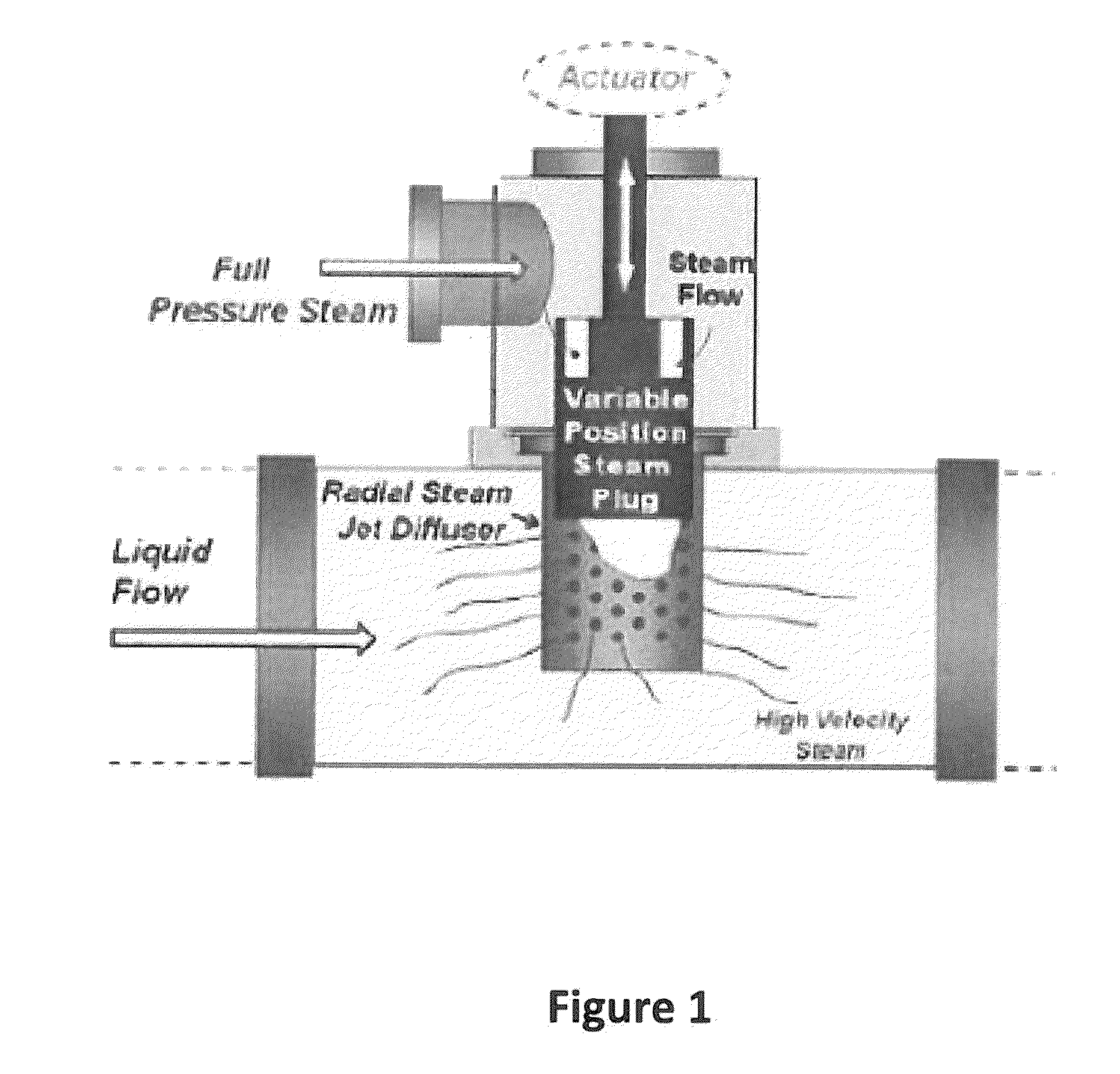Process for production of low microbial count milk products
a low microbial count, milk product technology, applied in the field of milk products, can solve the problems of inability to flush out microorganisms, restricted flow velocity of components, and possible sensorimotor defects, and achieve the effect of markedly reducing the microbial load of milk products
- Summary
- Abstract
- Description
- Claims
- Application Information
AI Technical Summary
Benefits of technology
Problems solved by technology
Method used
Image
Examples
example 1
Production of Pasteurized Skimmed Milk
[0041]Raw milk was cooled to 6° C. and heated to 25° C. in the course of 15 seconds using a plate heat exchanger. The preheated milk was heated to 55° C. by a first direct superheated steam injection in the course of 1 second and then passed into a separator in which the cream was separated off. The skimmed milk was heated to 72° C. in the course of 2 seconds by a second direct superheated steam injection and pasteurized. Then, the pasteurized milk was sprayed with turbulent flow into a reactor and the pressure in this case was decreased to the extent that the product cooled to 25° C. in the course of 5 seconds. The exiting product was then cooled to 8° C. in a plate heat exchanger. The resultant skimmed milk was virtually free from mesophilic and thermophilic spores.
PUM
 Login to View More
Login to View More Abstract
Description
Claims
Application Information
 Login to View More
Login to View More - R&D
- Intellectual Property
- Life Sciences
- Materials
- Tech Scout
- Unparalleled Data Quality
- Higher Quality Content
- 60% Fewer Hallucinations
Browse by: Latest US Patents, China's latest patents, Technical Efficacy Thesaurus, Application Domain, Technology Topic, Popular Technical Reports.
© 2025 PatSnap. All rights reserved.Legal|Privacy policy|Modern Slavery Act Transparency Statement|Sitemap|About US| Contact US: help@patsnap.com



